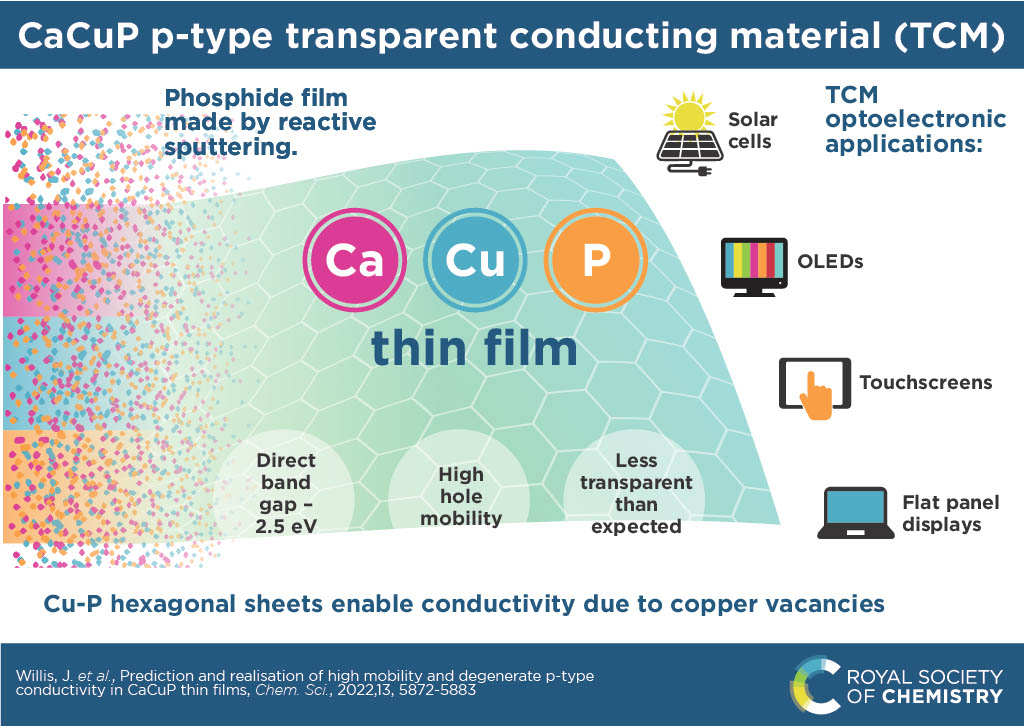Thin films of novel semiconductors could open a new window for optoelectronics
An international research team describe how to make thin films of semiconductor materials composed of calcium copper and phosphorus (CaCuP) in the open access journal Chemical Science.
“We have synthesised CaCuP thin films for the first time, and found them to be semiconductors with very high p-type electrical conductivity,” says Andrea Crovetto at the Technical University of Denmark. He worked on the research with colleagues in the UK, USA and Germany.
Crovetto explains that p-type conductivity (p for positive) is a form of semi-conduction in which electric current is carried by the movement of positively charged “holes” rather than by the mobile electrons of n-type (n for negative) conductivity. “The holes can be thought of as bubbles of missing electrons moving around a sea of inactive electrons,” he says.
High performance and transparent p-type conducting materials are keenly sought by researchers as they are expected to offer improved efficiency and new design opportunities for optoelectronic devices that work by inter-converting light and electrical energy in either direction. Applications could include solar cells generating electrical power, sensors driven by or responding to light, and also transparent electronics.
The challenge to find efficient p-type conducting films inspired Crovetto to write a research proposal and to visit the group led by Andriy Zakutayev at the National Renewable Energy Laboratory in the USA. He knew that Zakutayev’s team had a unique growth chamber that could create a wide range of phosphide films. He also sought guidance and assistance from David Scanlon at University College, London, UK, who was an expert on the theoretical aspects CaCuP phosphide films. His is the type of work that had predicted such films could have novel and very useful characteristics.
The researchers and other colleagues then collaborated to predict in more detail the properties of specific CaCuP films and then eventually to make and test them. PhD student Joe Willis from Scanlon’s group led this new round of theoretical predictions.
“CaCuP had never been made before as a thin film and I was afraid it might not be stable in air, so it was exciting to finally see it synthesised and find that it was not degrading when taking it out of the growth chamber,” says Crovetto.
The electrical properties proved to be close to what was expected. One challenge for the future, however, is to make the films more transparent than was initially achieved. Crovetto says he was disappointed to see that the first films made were not as transparent as the team had hoped. They believe that this might be resolved by future developments in the chemistry of growing the films, which will be a priority task for their ongoing investigations.
Crovetto says that combining transparency with good p-type electrical conduction is not easily achieved using conventional materials like oxides or binary semiconductors. Successful incorporation of good transparency into the new CaCuP could therefore be a very significant step forwards. “Our work could open up a new field of phosphide materials discovery,” he concludes.
Chemical Science is open and free for both readers and authors.
Article details:
Willis, J. et al: Prediction and realisation of high mobility and degenerate p-type conductivity in CaCuP thin films Chemical Science (2022).











